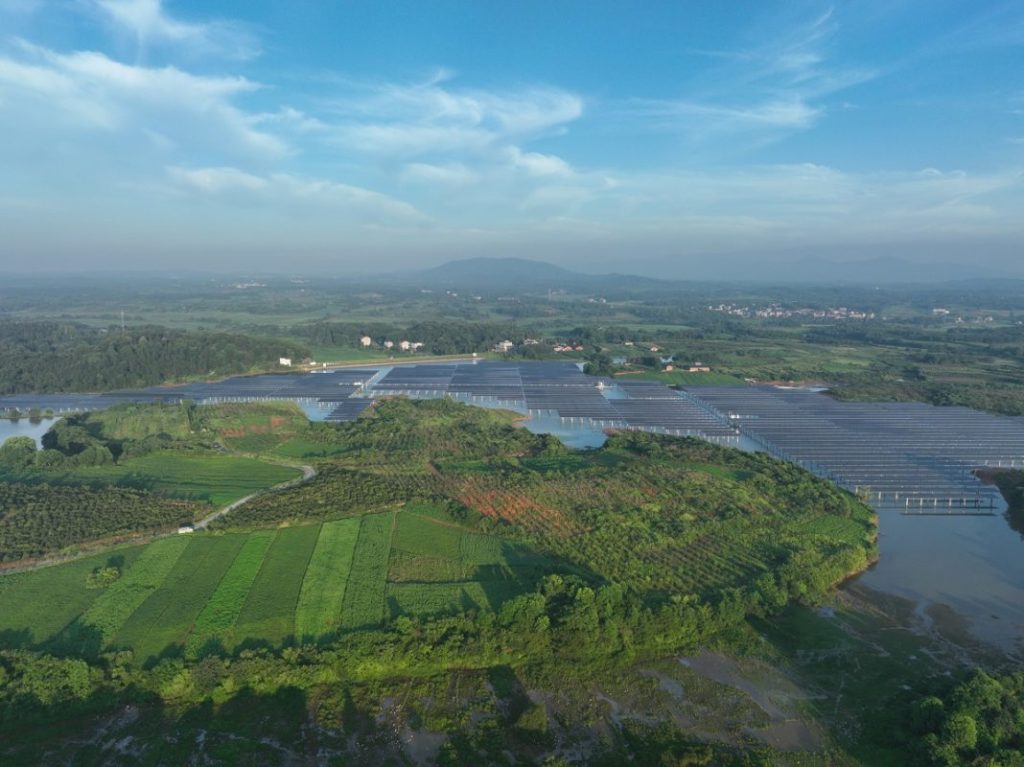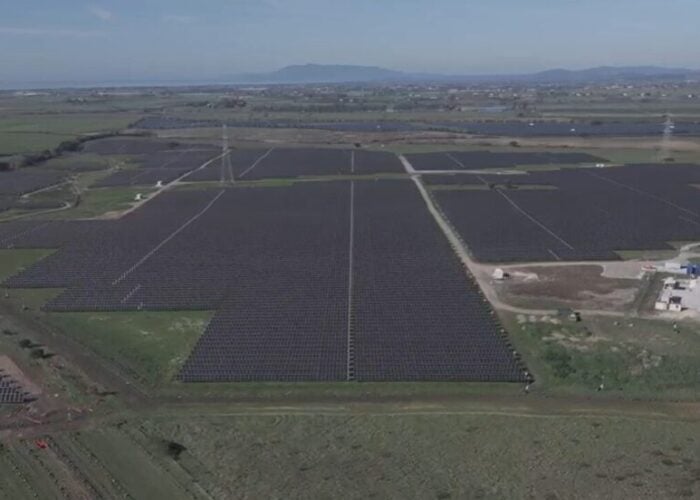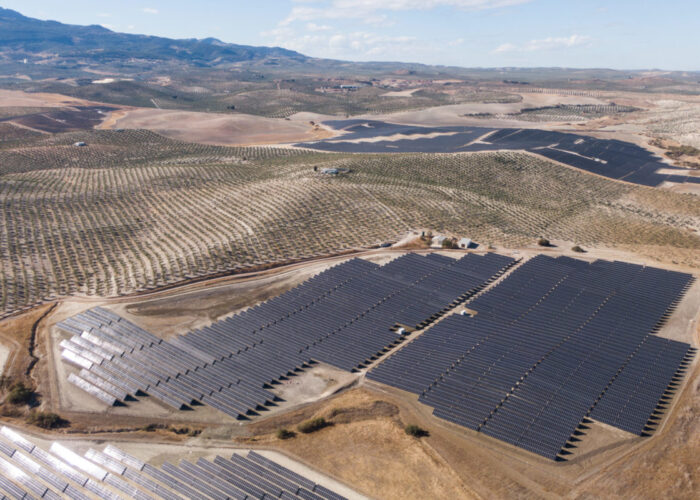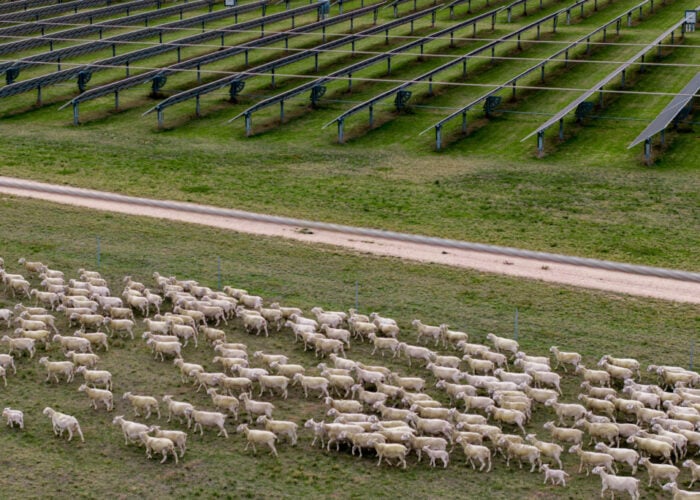
After opening tracker manufacturing facilities in Spain and in China, TrinaTracker, the tracker business division of Solar Module Super League (SMSL) member Trina Solar, opened its third tracking manufacturing plant in Brazil in September to better supply the ever-growing Brazilian domestic and Latin American markets.
The tracker manufacturing plant in Brazil will have an annual nameplate capacity of 2.5GW and increase the SMSL company’s annual global tracker production capacity to 10GW. As of the end of 2022, the company had delivered more than 9GW of trackers globally and continues to expand with operation centres in markets such as China, Asia-Pacific, Europe and Latin and North America to better provide worldwide solutions and services.
Unlock unlimited access for 12 whole months of distinctive global analysis
Photovoltaics International is now included.
- Regular insight and analysis of the industry’s biggest developments
- In-depth interviews with the industry’s leading figures
- Unlimited digital access to the PV Tech Power journal catalogue
- Unlimited digital access to the Photovoltaics International journal catalogue
- Access to more than 1,000 technical papers
- Discounts on Solar Media’s portfolio of events, in-person and virtual
PV Tech spoke with Walt Ma, president of the tracker business unit at Trina Solar, about the company’s facility in Brazil, the importance of a localised manufacturing strategy and the current challenges and trends in the tracker industry.
PV Tech: TrinaTracker recently opened its third tracker factory, located in Brazil. Could you give us a brief summary of the rationale behind its location? Which market segments are you planning to target with this third factory?
Walt Ma: The Brazil factory is located in Salvador and we planned for it in 2022, with it becoming operational commercially at the beginning of September. The target market segments for the factory will be both utility-scale and distributed solar plants.
It will specialise in manufacturing tracker components and smart control systems. We will also take the factory as an operations centre for supply chain management in Latin America and project engineering services.
What made you decide on Brazil as the third country in which to open a new factory and how important as a market in Latin America?
First of all, Latin America is a very important market for the solar tracker industry, accounting for about 16% of the world’s total market share. Brazil ranks second in the world, only behind North America, and it has the potential for consistent growth. It is also the largest market in Latin America, which is why we chose it as the location for the new factory.
Latin America is also an important market for TrinaTracker. As of mid-2023, we have delivered over 3GW of trackers for Latin America, and in markets such as Chile and Argentina we are top suppliers.
Apart from TrinaTracker, over the past few years, there have been other leading tracker manufacturers planning globalised production. Can you explain why localised manufacturing is important to solar tracker companies?
Firstly, it’s about the global economy. Deglobalisation is becoming a trend, with many countries announcing local content requirements to protect their local manufacturing and generate local employment.
This trend is quite obvious in the solar PV industry and comparing silicon materials, solar cells and modules with solar trackers, it is easier to source the raw materials for these locally, as in the case of Brazil. The US Inflation Reduction Act, with regard to trackers, and India’s additional tariffs on Chinese steel structures are other examples of the move away from globalisation, with the European Union and Australia also planning on introducing such policies.
Secondly, it’s linked to the specific characteristics of the tracker industry itself. Compared with standard products like modules and inverters, trackers have more engineering based elements in their make up. They need suppliers to provide services from project design and delivery to onsite engineering support. The products are highly customised according to different site conditions, and normally a tracker system contains over a hundred components, making product delivery very challenging.
Therefore, localised manufacturing and services for the industry are very important. Through localised manufacturing, suppliers can shorten product delivery time and hold sufficient spare parts in order to reduce the construction period for installers and enable them to offer a quicker response in case of emergency scenarios.
Will TrinaTracker be opening new factories in other countries in the future? What is your localisation strategy for the next 3-5 years?
Yes, for sure. Besides the current factories in China, Spain and Brazil, we have further plans for the Middle East and Australia. It will depend on market potential and local policies and the method for localisation will combine self-owned factories and partnerships with local mainstream suppliers.
What are the current challenges and opportunities for solar trackers globally?
From the global viewpoint, solar project application scenarios are becoming more complex, with an increasing number of projects being constructed in difficult terrains and under harsh weather conditions. The form of new projects is also evolving. Agrivoltaic (agriPV) projects are becoming popular and distributed and offline solar plants are now developing faster than large scale ground systems. All these changes involve an adjustment in both product and service support.
TrinaTracker provides solutions for a wide range of scenarios. For instance, our Vanguard 1P is designed for use on flat terrain, it is reliable in high winds and more cost efficient with longer strings compatible with the latest modules.
The Vanguard 2P is designed for complex terrains such as agriPV, fishery solar farms and hard soiling ground. Its higher structure allows space for plants and fish and the reduced piles of a 2-in-portrait configuration can reduce BOS costs during engineering, construction and operations and maintenance. China as a country has more than ten years of experience in developing agriPV and fishery solar farms, and we ourselves have significant experience from supplying to previous projects.
We have a new technology, “flex structure”, which is used for irregular mountain terrains and other special applications, like the agriculture and sewage segments. As part of our localisation strategy, we will ensure that all products can be locally designed, produced and serviced.
Are there any new trends that have arisen over the past few months?
Yes, the obvious trend is for tracking systems to become both smarter and digitalised.
Solar systems require solutions offering higher performance and lower LCOE, which is the ultimate target. This can come from technical innovation in modules and inverters and/or innovation in system design, while tracker-related innovation can also contribute. Compared with a fixed structure, the use of trackers can increase energy yield by between 10-25%.
This is already proven, and we see it in the global market. Over 40% of ground-mounted solar systems are using trackers, with that figure exceeding 80% in some markets. Use of intelligent technologies can further increase energy gain by between 3-8%.
We label the technology “smart control system”. It includes smart NCU/TCU (network control unit/thin client unit), a smart algorithm and smart monitoring and control.
The NCU/TCU algorithm can, in real time, monitor and analyse the irradiance and shading conditions of tracker rows through machine learning, automatically adjusting the tracker angle to maximise power generation from a minimum unit of a single row. We have internally calculated data showing that, in 2022, around 18% of global solar tracking systems were equipped with AI smart tracking algorithms, representing some 12.6GW. TrinaTracker already has a market share of over 10% in this area, a figure we expect to rise to 30% during the coming year.
‘Smart cloud’ is another trend in tracking systems, a software application deployed during project operations and maintenance to monitor and manage tracker performance. It can further increase energy yield beyond that attributable to the smart algorithm and make remote monitoring and maintenance both easier and safer.
Tracker digitalisation has huge potential in the product and service areas and TrinaTracker is committed to creating more related opportunities. The smart control system is just the beginning, the technology and platform a significant step in achieving real local service.






